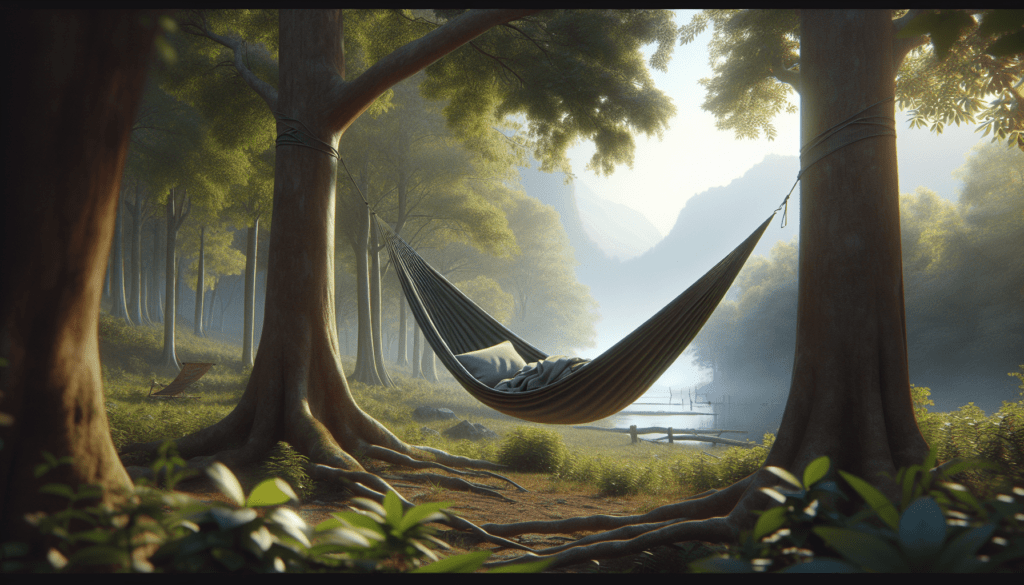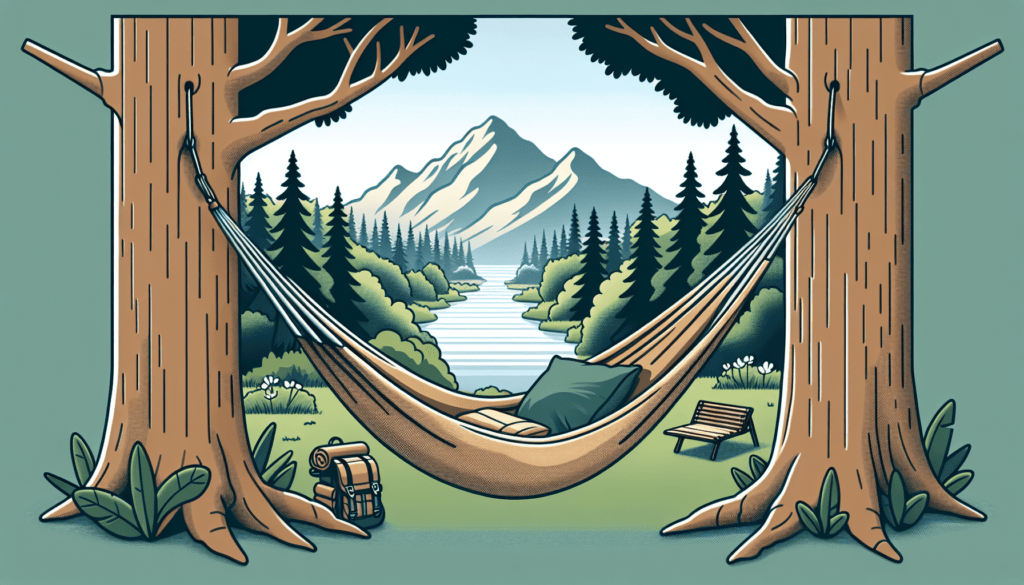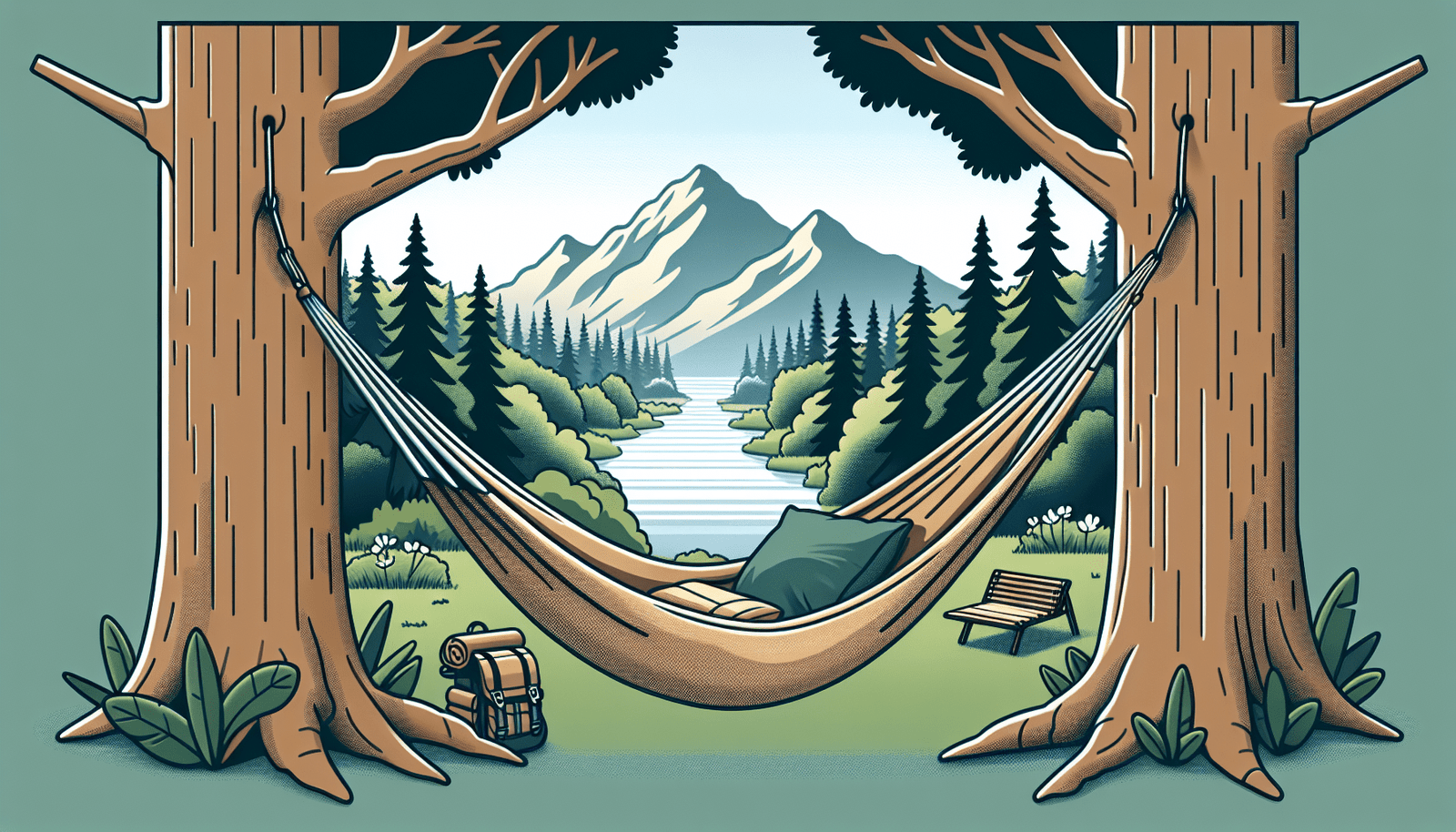Have you ever wondered what the best camping hammocks for beginners are? Whether you’re a seasoned outdoor enthusiast wanting to try something new, or entirely new to camping and looking for a comfortable, easy-to-use option, camping hammocks can offer a unique and restful experience. Let’s uncover all the details you need to know to make an informed decision.

Why Choose a Hammock for Camping?
Hammocks can enhance your camping experience by elevating you off the ground, offering a comfortable night’s rest free from rocks, roots, and uneven terrain. They’re lightweight, easy to pack, and set up quickly. Plus, the gentle sway can make falling asleep under the stars even more enjoyable.
Benefits of Using a Hammock
When you switch from a tent to a hammock, you might be surprised by the numerous benefits:
- Comfort: No worries about rough or uneven ground beneath you.
- Versatility: Hammocks can be set up almost anywhere there are trees or other strong anchor points.
- Portability: Generally lighter and more compact than tents.
- Enhanced Sleep: Many find that the gentle sway helps them sleep better.
- Quick Setup: Usually simpler and faster to set up than a tent.
Types of Hammocks
Before you select your hammock, it’s crucial to understand the different types available. They fall broadly into three categories:
Single vs. Double Hammocks
- Single Hammocks: Usually 4-5 feet wide and suitable for one person.
- Double Hammocks: Typically 5-6 feet wide, can hold two people or offer extra space for one.
Gathered End Hammocks
This type of hammock is the most commonly used for camping. It features fabric gathered at both ends and offers a great balance of comfort, weight, and packability.
Bridge Hammocks
Bridge hammocks use spreader bars to create a flatter, more bed-like surface. They can be heavier but are often preferred for side sleepers or those who want a more stable structure.
Key Features to Look for in a Beginner Hammock
When selecting the best camping hammock for a beginner, certain features matter most:
Material
Durability and comfort are essential. Look for materials like ripstop nylon or polyester. Light, breathable, and strong, these fabrics can hold up to outdoor conditions.
Weight Capacity
Ensure the hammock can support your weight. Most single hammocks will hold at least 200-400 pounds, while double hammocks typically support 400-500 pounds.
Size
Choose based on your height and whether you want a single or double hammock. Taller campers may need longer hammocks for optimal comfort.
Suspension System
The suspension system is critical for easy setup. Look for tree-friendly straps with multiple adjustment points to simplify the hanging process.
Bug Nets and Rain Tarps
Optional but often necessary, these add-ons protect against insects and inclement weather. Integrated systems tend to be lighter and more convenient, but separate pieces offer more flexibility.
Price Range
Quality hammocks are available in various price ranges. For beginners, it’s advisable to start with a budget-friendly option that doesn’t compromise on essential features.

Top Hammock Recommendations
Ready to find the perfect hammock? Here are some of the best options for beginners:
| Brand | Type | Material | Weight Capacity | Features | Price Range |
|---|---|---|---|---|---|
| ENO SingleNest Hammock | Single | 70D High Tenacity Nylon Taffeta | 400 lbs | Lightweight, Easy Setup, Durable | $50-$75 |
| Wise Owl Outfitters Hammock | Double | Heavy Duty 210T Parachute Nylon | 500 lbs | Affordable, Comfortable, Includes Straps | $30-$50 |
| Hennessy Hammock Expedition | Gathered End | 210D Oxford Nylon | 250 lbs | Integrated Bug Net, Rainfly | $100-$150 |
| Kammok Roo Single Ultralight | Single | Gravitas™ 20D Nylon | 300 lbs | Ultralight, Compact, Tear-resistant | $75-$100 |
| Lawson Blue Ridge Camping Hammock | Bridge | Nylon/Polyester | 275 lbs | Spreader Bars, Integrated Netting and Rain Cover | $150-$200 |
ENO SingleNest Hammock
ENO is a well-established brand known for its reliable and comfortable hammocks. The SingleNest Hammock is no different, providing a roomy experience with a high weight capacity. Its lightweight and durable materials make it ideal for beginners.
Wise Owl Outfitters Hammock
The Wise Owl Outfitters Hammock is a budget-friendly option that doesn’t skimp on quality. It’s spacious, supports a high weight capacity, and includes everything you need to get started, making it perfect for first-time hammock campers.
Hennessy Hammock Expedition
This gathered end hammock is packed with features. It has an integrated bug net and rainfly, ideal for complete novices who want to be prepared for any situation. The setup process is straightforward, even for those new to hammocking.
Kammok Roo Single Ultralight
For backpackers or those who value ease of transport, the Kammok Roo Single Ultralight is a great pick. It’s very light but still offers strong tear-resistant fabric, ensuring you have a reliable shelter with minimal weight in your pack.
Lawson Blue Ridge Camping Hammock
If you prefer the bridge style, the Lawson Blue Ridge Camping Hammock offers comfort and convenience. Equipped with spreader bars, it provides a flat sleeping surface and includes integrated bug netting and rain cover.
Setting Up Your Hammock
Successful hammock camping is contingent on proper setup. Here’s how to get it right:
Choosing a Location
Pick a site with trees roughly 10-15 feet apart. Ensure there are no overhanging trees, branches, or other hazards that could fall on your equipment.
Hanging Your Hammock
- Straps: Wrap the tree straps around each tree at a height of about 5-6 feet.
- Suspension: Attach the hammock to the straps using carabiners or other connectors.
- Angle: Aim for a 30-degree angle between the straps and the ground.
- Height: The lowest point of the hammock should be about 18 inches above the ground once weighted.
Adding Trees and Accessories
To ensure a good night’s sleep, don’t forget accessories like:
- Bug Net: Essential in insect-heavy areas; attach it over the hammock for full coverage.
- Rain Tarp: Set up over the hammock for weather protection; ensure it’s tight and stakes are secure.
Staying Comfortable in Your Hammock
Comfort is key to a great hammock camping experience. Here are some tips to maximize it:
Staying Warm
Even in summer, nighttime temperatures can drop significantly. Consider these for warmth:
- Underquilt: Insulates the underside of the hammock.
- Sleeping Pad: Adds insulation and comfort.
- Sleeping Bag: Choose one rated for the expected nighttime temperatures.
Sleeping Positions
The way you sleep impacts your comfort:
- Diagonal Lay: Lying diagonally provides a flatter sleep surface and better comfort.
- Pillow: A small, inflatable pillow can significantly enhance neck support.
In-Use Adjustments
Feel free to shift and adjust the hammock throughout the night as needed. The goal is to find that sweet spot where you feel secure and comfortable.
Common Hammock Camping Mistakes
Avoid these rookie errors to ensure your camping trip is memorable for the right reasons:
Poor Site Selection
Choosing the wrong spot can lead to discomfort or danger. Always inspect the area for hazards and ensure your anchors are secure.
Incorrect Setup
An improperly angled or too-low hammock can result in poor sleep or even falls. Revisit the setup guidelines to avoid these pitfalls.
Underestimating Weather Conditions
Be prepared for all weather types. A rain tarp and adequate insulation are essential, even if the forecast looks clear when you set out.
Frequently Asked Questions
Even with all this information, you might still have a few questions. Here are some of the most common queries:
Do I Need a Special Sleeping Bag for Hammock Camping?
You don’t necessarily need a special sleeping bag. However, an underquilt or sleeping pad can provide additional insulation that is quite beneficial.
How Do I Avoid Bugs?
A quality bug net is key. Some hammocks come with integrated bug nets, but separate nets are also effective.
Can I Use a Hammock in All Seasons?
Yes, but it requires preparation. Cold-weather camping will require more insulation to keep warm. Conversely, in hotter months, ensure you have adequate ventilation to stay cool.
Conclusion
When choosing the best camping hammock for beginners, comfort, ease of use, and durability are essential. Remember to prioritize features like the hammock’s material, weight capacity, and suspension system. With the right hammock and a little know-how, you’ll be enjoying the great outdoors in no time. Happy camping!
Support us! Wilderness gear Pro may earn a small commission from affiliate links in this article. Learn More

